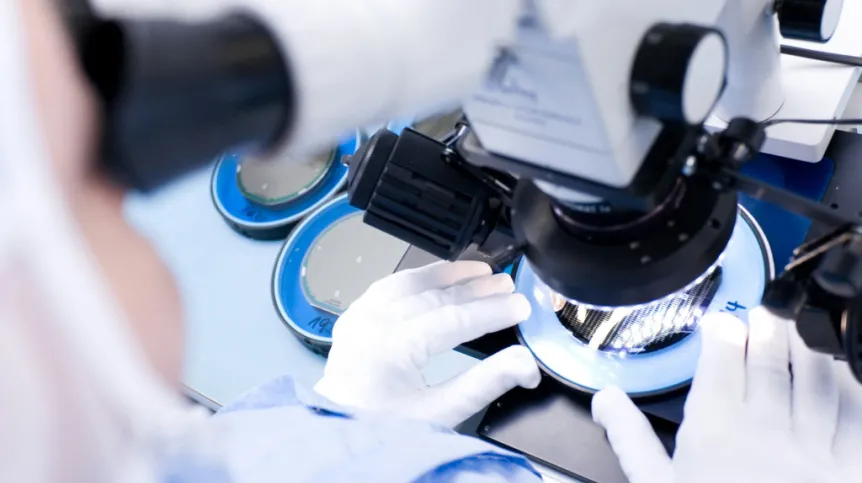
A team of international scientists has identified a substance that inhibits the enzyme responsible for the development of atherosclerosis.
Proprotein convertase subtilisin/kexin type 9 (PCSK9) is an enzyme that has long been one of the key targets in anti-atherosclerosis drug research. Its binding to the low-density lipoprotein receptor (LDLR) leads to the development of this disease. If a molecule could be found that effectively inhibited PCSK9 by forming a stable complex with it, it would be possible to inhibit the progression of atherosclerosis, one of the leading causes of stroke and heart attack.
In the article 'Finding inhibitors for PCSK9 using computational methods' published in the prestigious journal PLOS ON", the research group described a method for identifying potential PCSK9 inhibitors using advanced computational methods based on bioinformatics and cheminformatics. In the future, these compounds could become new antiatherosclerotic drugs.
Michał Ponczek from the Faculty of Biology and Environmental Protection, University of Lodz said: “They could partially replace the long-known statins or be used together with them to prevent blood vessel blockage, leading to fatal strokes and heart attacks.”
Together with scientists from Pakistan (Lahore College for Women University), Ponczek looked at over a dozen known atherosclerotic drugs: captopril, zofenopril, enalapril, ramipril, quinapril, perindopril, lisinopril, benazepril, fosinopril, cilazapril, allexolipril, trandolipril, trandolipril. Using advanced computational methods, the scientists first identified a group of the best drug candidates (PCSK9 inhibitors), and then, by examining the interactions between the PCSK9 target protein and computationally identified substances, they determined which of them had the greatest potential to be an effective drug.
They used molecular docking, which revealed the top 10 candidates for PCSK9 inhibitors. Some of them, such as (S)-canadine, hesperetin or labetalol, are substances of plant origin.
In the last phase of the study, scientists analysed them in terms of pharmacokinetic properties and oral bioavailability. It turned out that the (S)-canadine-PCSK9 complex was the most stable of all and (S)-canadine could be a potential atherosclerosis inhibitor worth testing in future in vitro studies.
The scientists said: “Thanks to the increasing computing power of computers, molecular dynamics has now become a more accessible computational technique with which it is possible to simulate the behavior of protein-ligand complexes and drug effects on biological macromolecules that can be calculated over time at the atomic level.”
They added that their work is important for the development of new drugs against PCSK9 that could be administrated to treat heart diseases and control the rising problems related to high cholesterol for atherosclerosis prevention and treatment.
Atherosclerosis is one of the leading causes of stroke and heart attack in the world. Its development is directly linked to LDL and apolipoprotein B (apoB) elevation. Retention of apoB in the walls of arteries can initiate inflammation and plaque formation that reduces blood flow to various organs.
PCSK9 is a protein strongly associated with the LDL receptor (LDLR). When it binds to it, the receptor no longer binds to LDL itself, leading to accumulation of cholesterol and the risk of developing coronary artery disease. Therefore, inhibition of PCSK9 and its binding to LDLR is essential for disease prevention.
The University of Lodz Promotion Centre said that atherosclerosis is one of the most common causes of death among men and women aged 45-59, and the most common cause of death in the case of people over 60. According to the CSO report 'Life in 2019', more than 130,000 Poles died because of it in 2018.
PAP - Science in Poland, Katarzyna Czechowicz
kap/ zan/ kap/
tr. RL













